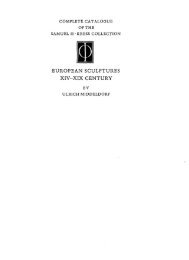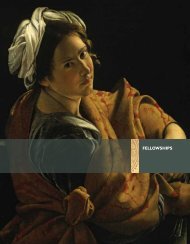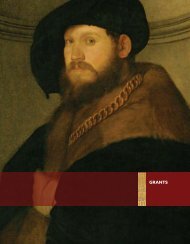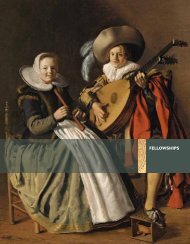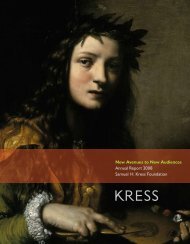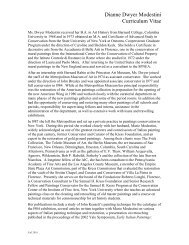The Campus Art Museum - Samuel H. Kress Foundation
The Campus Art Museum - Samuel H. Kress Foundation
The Campus Art Museum - Samuel H. Kress Foundation
Create successful ePaper yourself
Turn your PDF publications into a flip-book with our unique Google optimized e-Paper software.
How Participants Became Engaged with<br />
<strong>Art</strong> and <strong>Art</strong> <strong>Museum</strong>s<br />
How do those who are interested in and supportive of art and art museums become<br />
that way? What happens in their past that they not only become enamored with<br />
art but also, perhaps, choose a career that allows them to be immersed in art<br />
or museum life? I was talking with a select group—with art museum directors,<br />
curators, and other museum staff; with students who, often, are studying art<br />
history or art education; with faculty who make use of the museum in their<br />
classes; and with community members who are museum docents, volunteers, or<br />
board members, or alumni who remain connected in some way with the museum. 6<br />
From them, I sought to learn about aspects of their past that helped them become<br />
interested in the arts and, ultimately, art museums. Four factors seem to have had<br />
the largest influence:<br />
1. <strong>Art</strong>. As a child, they were surrounded by art, often because a parent was<br />
an artist. <strong>The</strong>y grew up with art and, sometimes, with a gift for drawing or<br />
painting.<br />
2. Course. As a college student or, sometimes, as a high school student, they took<br />
an art history course that, generally in combination with a fantastic teacher,<br />
interested them in taking more courses and got them interested in art and art<br />
museums.<br />
3. Job. <strong>The</strong>y took a job in an art museum (or gallery or frame shop) and, through<br />
the exposure and associated experiences, decided they wanted to pursue work in<br />
an art museum.<br />
4. <strong>Museum</strong>. <strong>The</strong>y visited art museums and became interested in them.<br />
Often, a combination of the above factors coalesced to encourage the<br />
respondent to pursue studies, work, and/or frequent interactions with art and<br />
museums. One would lead to the other, as when growing up in an art-centered<br />
environment led to taking courses in art and/or art history which led to a degree in<br />
the arts and a subsequent job in an art museum. Sometimes, however, the interest<br />
in the arts came more suddenly through a visit to an art museum or through a<br />
course. <strong>The</strong> following table focuses on different categories of respondents and the<br />
factors that appear as primary in interesting them in art museums.<br />
6. <strong>The</strong> thirty-four interviewees who are more removed from the art museum world are campus administrators, faculty<br />
loosely connected to the museum, and a few students who are at the museum because of a job. Many are, nonetheless,<br />
champions of the campus art museum.<br />
How Participants Became Engaged with <strong>Art</strong> and <strong>Art</strong> <strong>Museum</strong>s<br />
12



